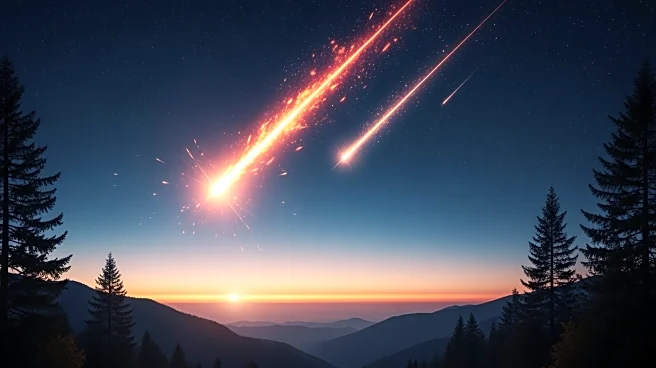What's Happening?
Astronomers have confirmed the existence of a quasi-moon, PN7, which has been trailing Earth since the 1960s. This small space rock moves in tandem with Earth, sharing its orbit around the Sun. Unlike
the Moon, PN7 is not gravitationally bound to Earth but co-orbits in a delicate balance. Observations from telescopes like Pan-STARRS in Hawaii have revealed the dynamic nature of Earth's orbital neighborhood, with PN7 joining a list of shadow satellites. These quasi-moons, including PN7, are not permanent fixtures but temporary companions that drift away after decades.
Why It's Important?
The discovery of PN7 and other quasi-moons challenges existing assumptions about Earth's moons and highlights the complexity of Earth's gravitational environment. These objects may be remnants of asteroids or lunar debris, offering insights into the formation of the Solar System. Understanding these celestial stowaways can redefine our knowledge of near-Earth space and the forces that shape planetary orbits. The presence of quasi-moons like PN7 underscores the dynamic and restless nature of Earth's cosmic neighborhood.
What's Next?
Upcoming missions, including one led by China, aim to collect samples from quasi-moons to determine their origins. These missions could answer whether these objects are remnants from Earth's formation or foreign visitors. Advanced telescopes like the Vera C. Rubin Observatory are expected to discover more quasi-moons, potentially reshaping our understanding of Earth's orbital environment and the history of the Solar System.
Beyond the Headlines
The existence of quasi-moons like PN7 reveals the intricate gravitational interactions within the Solar System. These discoveries may lead to new theories about planetary formation and the role of gravitational forces in shaping celestial bodies. The study of quasi-moons could also inform future space exploration and the search for extraterrestrial life.











